By Sergio Giral
Over the last decades Hispanic immigration have caused a major shift in the demographic complexion of the country. In Miami-Dade County only, this complexion is over 70% Hispanic -- with immigrants of Cuban descent making up the largest demographic. While an influx of Central and South Americans is both expanding and fragmenting the composition of Hispanics in the country, there is a growing group of Hispanics who have also played a significant role in this complexion, the Black Cubans.
To trace the history of Black Cubans from the days of the African slave trade, according to 1827 Census the Black and mulatto slaves and free came to compose approximately 60 % of the population. When Cubans began the Independence War against Spain, Blacks - free or slaves - strongly supported the revolt lead by Independence heroes, the poet Jose Marti and the mulatto liberator warrior, Antonio Maceo.
For centuries, Black Cubans had played a recognized role in the struggle for independence in a truly multiracial term. The Cuban cigar workers, who arrived in Tampa from Key West in 1886, are an example of this historical continuity. About 15% of the Cuban population of Ybor City and West Tampa would be Black Cubans found them segregated from white Cubans, and separated by Black-Americans by language, culture and religion. During his stay in Ybor City, Jose Marti declared the necessity of a united front beyond racial differences to liberate Cuba from the colonial Spanish dominium, declaring that being Cuban was "more than white, more than black”. This alliance it’s proved by an incident in which Martí narrowly escaped poisoning by Spanish agents, and found protection and friendship under the roof of Ruperto and Paulina Pedroso, prominent Black-Cubans. For her aid to the cause, Paulina has been called the "second mother" to the apostle.
Patriotic organizations as Club Nacional Cubano founded by Jose Ramon Safeliz in 1890 and Sociedad la Union Marti-Maceo founded by Black-Cubans patriots in Tampa in 1900, were composed of members with not distinction of race, however, the group split along racial lines due to the pressures of the segregated South under Jim Crow Laws.When US retreated from Cuba and the island had its own constitution that included the Platt amendment, the new administration favored Spanish immigration. Between 1900 and 1930 close to one million Spaniard arrived from Spain, and according to 1899 Census, Black and mestizo population decreased to 35%. Only a few outstanding Black-Cubans who distinguished themselves by Western educational standards had access to privileged circles. Black Cubans usually maintained low-income professions, which further deprived them of a social standard. Yet, the Cuban Constitution forbids any form of racial discrimination. No Black Cuban was banned to vote or denied access to public education.
After Fidel Castro took power in 1959, the first Cuban leap to South Florida was mainly wealthy and well-educated whites who slipped easily into society. Meanwhile, Castro developed a well-orchestrated propaganda on segregation and racial discrimination in United States that intimidated the Black population who opposed the regime. To this end, many Black Cubans migrated to cities like New York, where other Black Latinos groups had established an important presence. However, by 1965, the United States’ history of slavery, segregation and racism was superseded to by the achievements of its Civil Rights Movement. As a result, the potential for racial equality in the United States soon became a contributing factor in many Black Cubans’ decision to immigrate to the United States. This fact provoked a significant number of Black in the Mariel’s migration and the 1995 boatlift explosion.
Cubans living under a totalitarian regime have to survive within a “culture of fear”, developing a system of survival for their physical and psychological needs according to what restrictions imposes the State. Consider well the Black population. Black Cubans suffer discrimination and are considered alleged delinquents and drifters by the authorities. The penal population is almost exclusively Black. Currently, blacks and mulattos continue to be discriminated against in government leadership positions, even though they make up over half the population very few hold seats in the Central Committee and Castro's military leadership has practically no blacks in its ranks. Black Cubans have less access to dollars, since Cuban exiles that support their families in Cuba are predominantly white.
Black and mestizo Cubans play a significant role within the strong dissident movement in the Island. Among the many prisoners of conscience in Cuba, Jorge Luis Garcia Perez is an undeniable example of courage, suffering harassment and torture for his hunger strikes demanding Human Rights and political freedom. In February 2010, Orlando Zapata Tamayo, a Cuban Mason and political activist died in prison after fasting for more than 80 days. Guillermo Fariñas, an independent journalist who has been involved in a peaceful campaign for freedom of expression in Cuba, started a hunger strike that lasted 4 months calling for the release of prisoners of conscience. Fariñas was awarded the Andrei Sakharov Prize for Freedom of Thought by the European Parliament and Cuban authorities denied him the exit permit needed to travel outside the country. Dr. Oscar Elias Biscet, one of the 75 dissidents imprisoned in 2003 by the Cuban authorities, is a Black Cuban. Biscet was violently arrested and beaten while discussing a petition of Human Rights with16 other dissidents, condemned to 25 years sentence for "counter-revolutionary activities" and being kept in an infrahuman prison cell. Novelist and poet, Esteban Cardenas, arrested by State Security regarding unpublished manuscripts; Enrique Patterson, co-founded the Democratic Socialist Current, resulting in consecutive arrests. Ramon Colas, a former prisoner of conscience and founder of Independent Libraries of Cuba. In addition to sharing heroic dissidence, Vicki Ruiz Labrit, Marcos Lazaro Torres Leon, Omar Lopez Montenegro are among others Black Cuban dissidents.Due to today’s increasing of Blacks population in Cuba which possible could be compared to the 1836 Census, as a 51% mulatto (mixed white and black), 37% white, 11% black, and 1% Chinese, it’s difficult to assess the impact and role of Black Cubans in South Florida from days of slavery to their significance in contemporary American society. Today seems hard to accomplish and to fill a void in the recording and reporting of the Black Cuban experience as represented in both U.S. Census data and American popular culture. Without specific data on Cubans of African descendants, it seems that the only way to assess the role, which this group of Hispanics plays in our society today, is let our own daily experience be the judge.





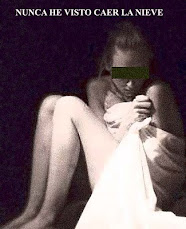



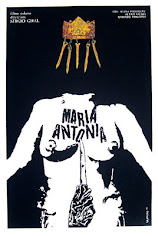

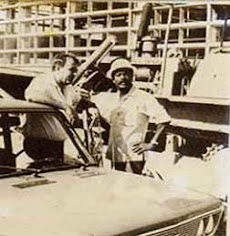
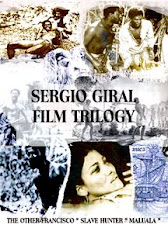



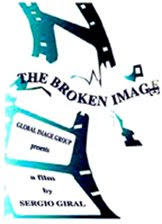
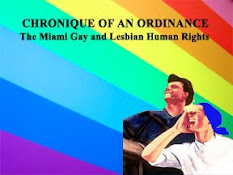

1 comment:
http://icrariza.blogspot.com/2010/12/premio-sunshine-award-2010.html
Post a Comment